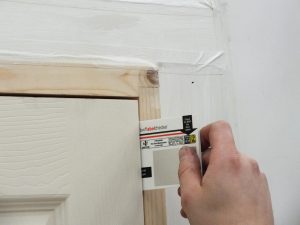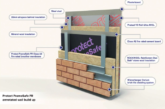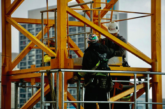
Hannah Mansell, Technical Manager at the British Woodworking Federation (BWF), highlights the importance of implementing a belt and braces approach to fire safety.
In the past 12 months, several fires have garnered high-profile media attention following the tragic events at Grenfell Tower, such as the Nottingham train station, Liverpool Echo Arena carpark and devastating Cameron House Hotel fires. Following these awful incidents there has been much debate, confusion and mixed information amongst the ‘responsible persons’ (landlords and building owners) who are legally responsible for ensuring the safety of their building’s occupants.
Choosing the ‘right’ solution for fire protection is even more complicated for those within the social housing and local authority sector. Housing portfolios contain a myriad of different buildings of various types, uses and ages, which all present different risks that need to be understood and effectively mitigated. A multitude of factors also have an impact in the event of a fire, such as human behaviour, knowledge of emergency procedures and the fire service response time. There is no ‘one size fits all’ solution.
Active and passive
With two key types of fire protection methods — active and passive — it’s important to consider the benefits and uses of both to ensure a holistic approach is applied to building protection. Active fire protection systems can be used to warn residents of fire or to suppress or delay the spread of fire. They are found within the interior of a building and can be manually or automatically activated systems, such as sprinklers, alarms and extinguishers.

Passive fire protection refers to several systems and products, including fire doors, the materials and construction of floors, walls and ceilings, dampeners in venting systems, smoke seals and fire stopping around penetrations such as drilled holes. These work together to compartmentalise a building.
Compartmentation helps keep fire, smoke and toxic gases in one place to prevent it spreading around the building and impacting the safety of occupants and fire fighters — an essential role only passive measures can fulfil. This is particularly important if there is a stay put fire plan, or where the occupants’ profile or building design would not allow for a safe and quick evacuation, for example in hospitals or high-rise accommodation. By limiting spread, not only is a level of protection provided for the occupants and those responding to the emergency, but also to the building itself, reducing damage and the consequential costs of a fire.
Often, there is industry debate surrounding which type is ‘better’. But when it comes to protecting the lives, property and possessions of tenants, this conversation is futile and counterintuitive, because passive and active measures work together. I
To provide a belt and braces approach and the best protection, it’s essential to understand the full risk profile of the specific building and its occupants. Not all solutions are suitable for all buildings or occupants, and not all of them work well with each other. It requires an understanding of the specific risks of a building at a granular level to allow the responsible person to effectively mitigate these risks and develop the fire plan and safety measures.
Maintenance is essential
Whether passive or active measures are installed at the construction stage of the property or during refurbishment, they all need to be regularly inspected, tested and correctly maintained to ensure they work when a fire breaks out. This is a legal requirement for all landlords under the Regulatory Reform (Fire Safety) Order 2005 Article 8 ‘Duty to take general fire precautions’. It’s also a legal requirement as part of Building Regulation 38 to hand over information to the building owner or landlord (the responsible person) to allow them to manage fire safety products or systems. This hand over is often missed in both new-build and refurbishment projects, and can cause issues for the responsible person throughout the building’s lifespan.
Worryingly, in a sample of local authority and housing association Fire Risk Assessments (FRA) examined by the British Woodworking Federation, issues with fire doors were reported in nearly 90% of documents, and breaches in compartmentation were found in most of the buildings inspected. Also, it highlighted that because FRAs are not usually invasive, they do not allow for the inspection of many passive fire protection measures that are inside the fabric of a building — what is hidden cannot be inspected, so if it is breached the increased risk is not accounted for.
To make checking the condition of fire doors as easy as possible, Fire Door Safety Week, organised by the British Woodworking Federation and the BWF-Certifire Fire Door Scheme, has produced a simple 5 Step Check for assessing the condition of installed fire doors. Although this is not the same as a full inspection carried out by a competent person, such as a qualified Fire Door Inspector, anyone can do this check and it can help highlight issues so that they can be reported to the building’s responsible person.
Fire protection measures for social housing should be considered in a holistic manner, using a combination of methods to provide the highest level of protection for the building’s tenants. Beyond installation, it cannot be stressed enough how important it is to scrutinise the condition of fire safety measures, as one missed inspection really could mean the difference between life and death.








